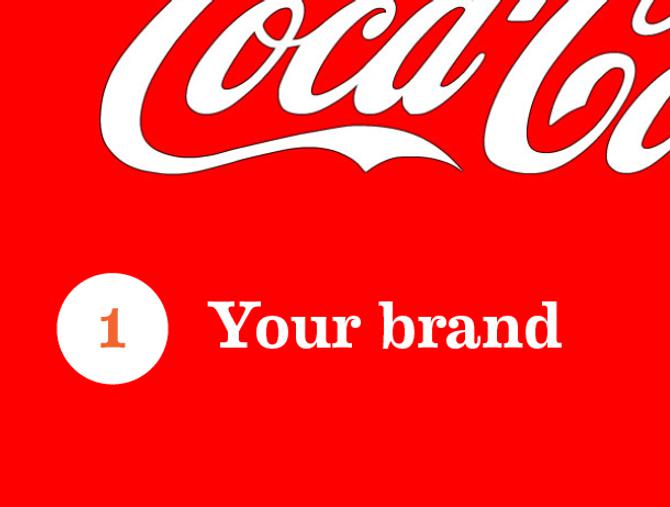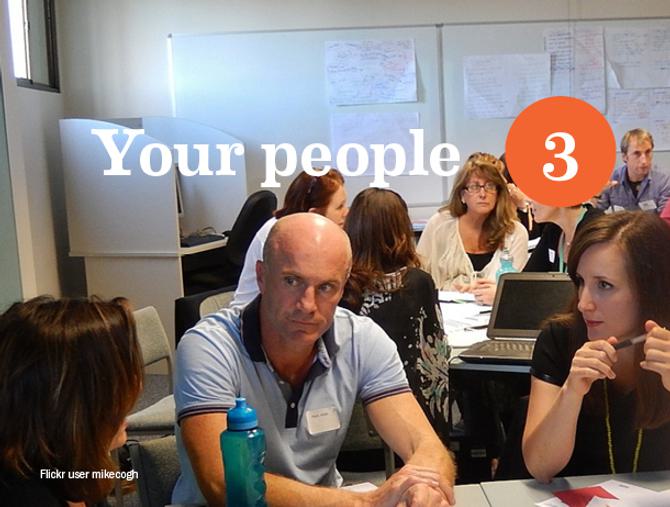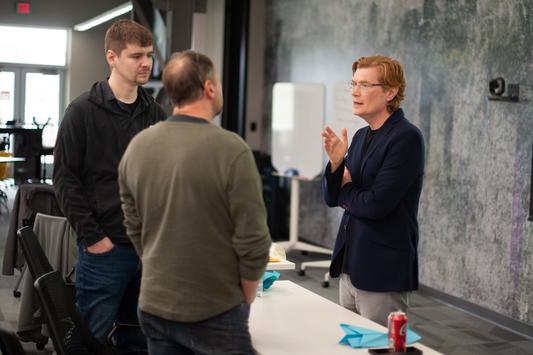
Peopledesign
The Built Environment
Furniture
Lighting
Textiles/Upholstery
Flooring/Carpet
Building Materials
AE Firms
Top-Line Growth
Top-Line Growth
Three ways to create top-line growth.
Innovation is a tricky word. What it’s really about is creating top-line growth by commercializing a new or repositioned offer. Cost-cutting and sales are essential but can only take you so far. In this era of vast choice, you have to constantly realign your organization with your customers’ needs, values, and desires. It can be a lot. Here are three elements that companies can focus on to give them a method of creating top-line growth that is repeatable and sustainable.

1. Your Brand
It all begins here. Conviction drives the best brands. Not, "Yeah, that's a neat idea," but a genuine, deeply rooted, unshakeable confidence. It's a passion that doesn't burn out. While all successful companies start from a place of conviction, their brand gets watered down and mismanaged. Why does this happen? For many logical, understandable, and often sneaky reasons, that's a topic for a different time. The critical question here is, "How does my brand help me increase top-line growth?" The answer is two-fold.
First, brands carry value all by themselves. The Coca-Cola brand, consistently among the top-rated brands globally, was recently valued at almost $72 billion (2011, Interbrand). That number is not for the company's super-secret recipe or its facilities or people – it's for the brand, the perception consumers have for what Coca-Cola stands for. That's much money for an invisible thing, but if you were to sell your company, try to grow in an existing market, or launch an offer in a new market, your brand would significantly influence your success.
Secondly, your brand sets the stage for all of your decision-making. From the people you hire, the products/services you create, the markets you play in, the audience you target, to the message you deliver and how you deliver it. Your brand is the base for all of those decisions. Your brand's proper positioning and delivery, both internally and externally, will set you on a clear path for top-line growth.

2. Your Offer
Your offer is a reflection of your brand, a reflection of how well you understand your target customers. Unfortunately, companies get caught in the downward spiral of creating line extensions and mirroring their competitors.
Harvard Business School professor Youngmi Moon writes in her book, Different, “In category after category companies have gotten so locked into a particular cadence of competition that they appear to have lost sight of their mandate – which is to create meaningful grooves of separation from one another. Consequently, the harder they compete, the less differentiated they become… Products are no longer competing against each other; they are collapsing into each other in the minds of anyone who consumes them.”
Ouch.
In order to escape that spiral and reach top-line growth, you need to think different and draw from multiple sources. What trends, big and small, are impacting society and what do they mean for your offer? What can you learn from analogous industries, rather than your own? And in your customer research, look for divergence and compensating behaviors – not consensus.
We like to think those great offers are generated by individual people in an individual moment, but that’s rare and if you want to increase your batting average draw from multiple sources.

3. Your People
One individual may not generate billion-dollar idea after billion-dollar idea, but it's still important to make sure you have the right people on board, put them in the right setting, and with the right tools.
There are three common ways companies try to pull top-line growth or innovation from people. The first is creating an “innovation group.” This group is either a set of individuals who take on innovation as a secondary hat or in larger organizations. Innovation is the sole role of these people.
The second way is to solicit ideas from the entire organization. “All ideas welcome! (Sort of.)”
Finally, the third is the dreaded workshop. A selected group of individuals goes off-site with a whiteboard, giant Post-Its, and colorful markers. In the next six hours, this group is to generate a series of ideas that will bring new revenue streams to your organization. Thank goodness for the coffee and cookie break.
These efforts aren't wrong; they just aren't achieving their full potential. The two most common missing ingredients are diversity and direction. Coming to a consensus too quickly means you haven't pushed the boundaries. Collecting people from different backgrounds and different perspectives helps.
Direction gives purpose to the activities and insights gathered by the innovation teams. Leadership should also provide a framework for new opportunities to have a shot at commercialization.
Because it requires different thinking and some form of risk and change, companies are rightfully skeptical and averse to going all-in on game-changing efforts. They struggle to implement these three elements sustainably and stunt action and growth. Research reports and project code names get left in the desert for the vultures.
The following questions are: which area do you feel your organization is weak in; is it your brand, product/service pipeline, or culture? Dig deep into the why – is it fear or lack of conviction? Maybe it's capabilities or unclear direction?
Consistently generating top-line growth is the hardest part of any business. It's scary, will require some risk, and will experience some failures. It's essential to build your brand on convictions, then use those convictions to guide your product/service pipeline and HR efforts. It's not easy, but figuring out the right combination for your company will help you make progress toward top-line growth.


